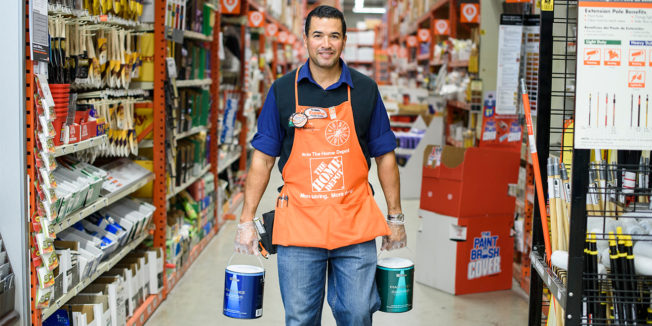Inspiration meets innovation at Brandweek, the ultimate marketing experience. Join industry luminaries, rising talent and strategic experts in Phoenix, Arizona this September 23–26 to assess challenges, develop solutions and create new pathways for growth. Register early to save.
Home improvement can be a challenging proposition, particularly if you don’t know a socket wrench from a round head ratchet.
Two retailers, The Home Depot and Lowe’s, have been helping consumers solve these problems for the past few decades, and they basically have the market cornered. In terms of brand perception, they’re neck and neck, ranking No. 8 and No. 5, respectively, on YouGov’s most recent survey of America’s best-perceived brands.
To stay on top of the industry, Atlanta-based Home Depot is focusing on a blended strategy, appealing to both construction professionals and the average consumer, while upping its ecommerce and in-store customer service game.
“Our goal is to help both professional contractors and average consumers solve problems,” said Kevin Hofmann, Home Depot’s CMO.
A

WORK SMARTER - LEARN, GROW AND BE INSPIRED.
Subscribe today!
To Read the Full Story Become an Adweek+ Subscriber
Already a member? Sign in


